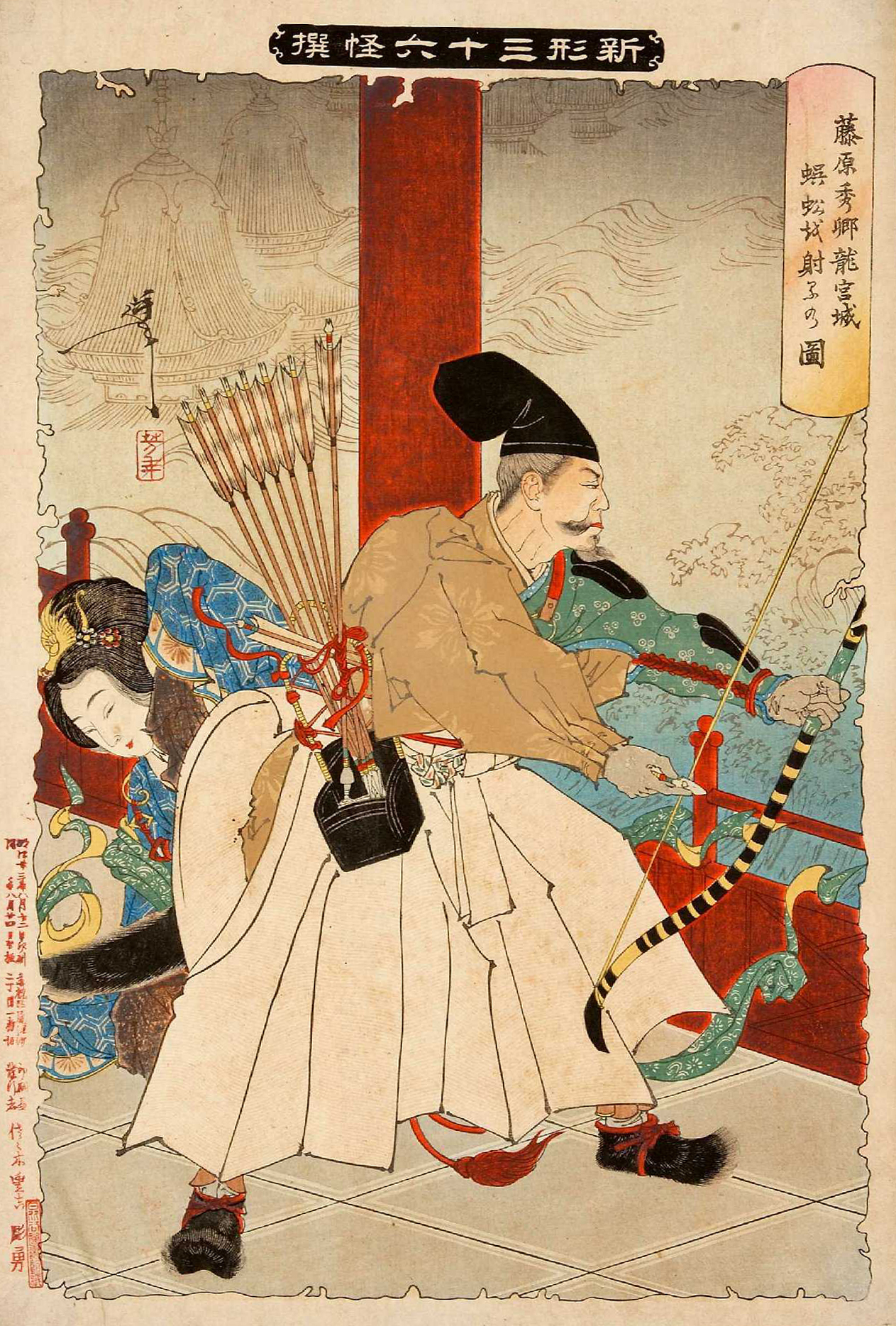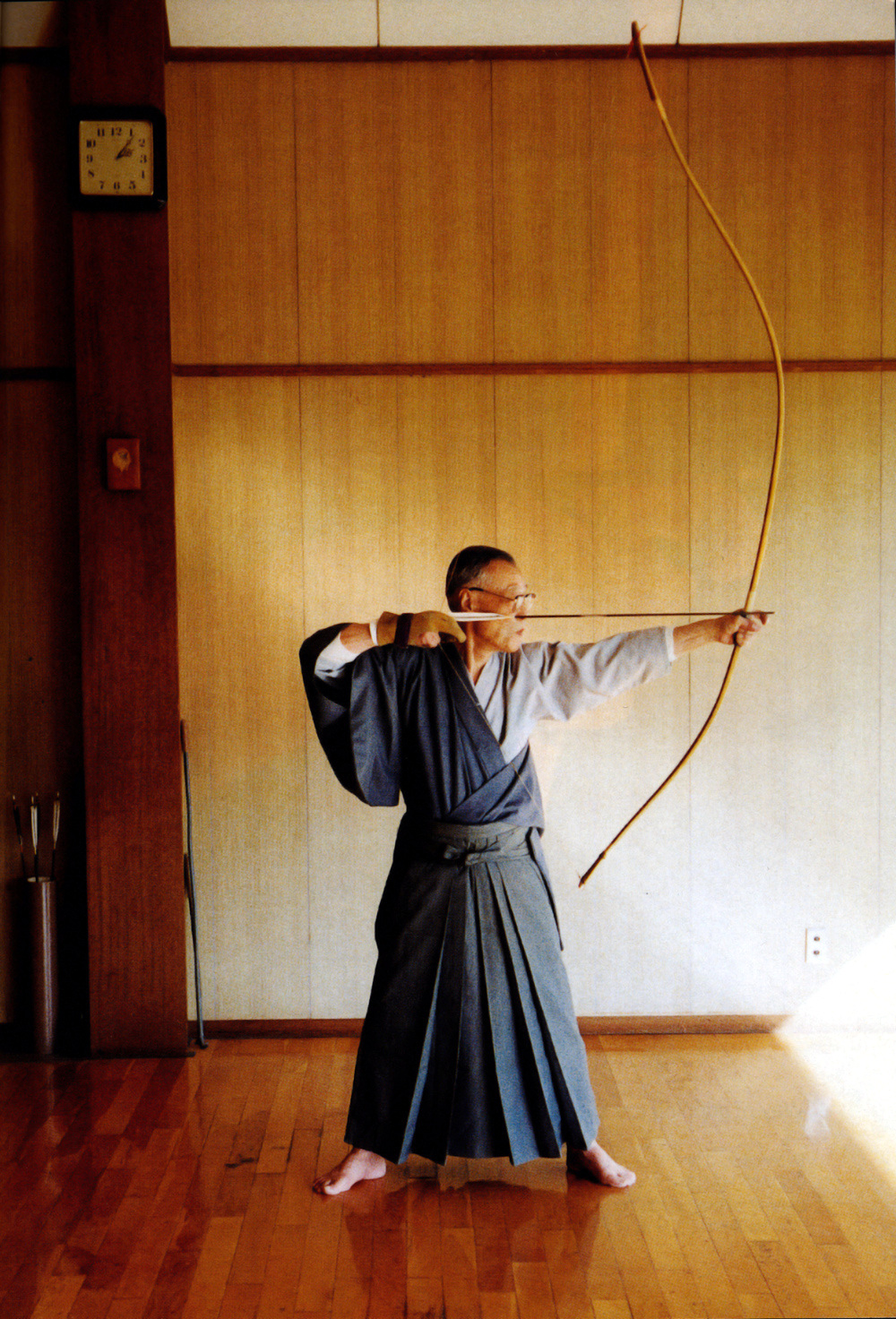|
Yazutsu
or ''Yadzutsu'' is a type of arrow quiver used in kyūdō, Japanese archery, using the Japanese longbow, the Yumi. It is generally cylindrical in shape, and zippered at the top, and appears something like a cylindrical holder of plans. As ''kyūdō ya'' (arrows) are quite long, the ''yazutsu'' is quite long compared to quivers from other styles of archery. Traditional ''yazutsu'' are made of cloth/satin or leather, modern ones are often made of synthetic material. They are often decorated with cord. In kyūdō the ''yazutsu'' is generally just used to carry the arrows to the dōjō. Once in the dōjō, they are held in the hand or placed on the ground for actual nocking and shooting. Traditional archers may use another type of quiver, the ''yebira are types of quiver used in Japanese archery. The quiver is unusual in that in some cases, it may have open sides, while the arrows are held in the quiver by the tips which sit on a rest at the base of the ebira, and a rib that comp ... [...More Info...] [...Related Items...] OR: [Wikipedia] [Google] [Baidu] |
Yebira
are types of quiver used in Japanese archery. The quiver is unusual in that in some cases, it may have open sides, while the arrows are held in the quiver by the tips which sit on a rest at the base of the ebira, and a rib that composes the upper part and keeps them in place. There are many types of ebira, some more ornate, some ceremonial, some more plain. Other types of ebira are more substantial and more boxlike, much like quivers from other countries. The ebira was used traditionally by samurai in combat or hunting, and also is used for ceremonial archery in modern-day Japan, such as in yabusame. It could be quite decorative. It is completely different from the cylindrical yazutsu, which is used only for carrying Kyūdō arrows. Some ebira could hold up to three dozen arrows. The ebira can be slung over the back, or kept on saddle by horse archers. Gallery File:Yebira utsubo 1.JPG, Utsubo type quiver. File:Yebira yazutsu or yadzutsu 2.JPG, Yazutsu or yadzutsu type quive ... [...More Info...] [...Related Items...] OR: [Wikipedia] [Google] [Baidu] |
Quiver
A quiver is a container for holding arrows, bolts, ammo, projectiles, darts, or javelins. It can be carried on an archer's body, the bow, or the ground, depending on the type of shooting and the archer's personal preference. Quivers were traditionally made of leather, wood, furs, and other natural materials, but are now often made of metal or plastic. Etymology The English word quiver has its origins in Old French, written as quivre, cuevre or coivre. Types Belt quiver The most common style of quiver is a flat or cylindrical container suspended from the belt. They are found across many cultures from North America to China. Many variations of this type exist, such as being canted forwards or backwards, and being carried on the dominant hand side, off-hand side, or the small of the back. Some variants enclose almost the entire arrow, while minimalist "pocket quivers" consist of little more than a small stiff pouch that only covers the first few inches. The Bayeux Tapestry ... [...More Info...] [...Related Items...] OR: [Wikipedia] [Google] [Baidu] |
Kyūdō
''Kyūdō'' ( ja, 弓道) is the Japanese martial art of archery. Kyūdō is based on '' kyūjutsu'' ("art of archery"), which originated with the samurai class of feudal Japan. In 1919, the name of kyūjutsu was officially changed to kyūdō, and following the example of other martial arts that have been systematizing for educational purposes, kyūdō also reorganized and integrated various forms of shooting that had been used up until then. High level experts in kyūdō may be referred to as , and some practitioners may refer to themselves as ''yumihiki'' (弓引き), or 'bow puller'. Kyūdō is practised by thousands of people worldwide. As of 2005, the International Kyudo Federation had 132,760 graded members. The bow they use is called a , and the most common one has an asymmetrical shape of more than , and is characterized by the archer holding the part of the bow below the center to shoot the arrow. History The beginning of archery in Japan is pre-historical. The first ... [...More Info...] [...Related Items...] OR: [Wikipedia] [Google] [Baidu] |


